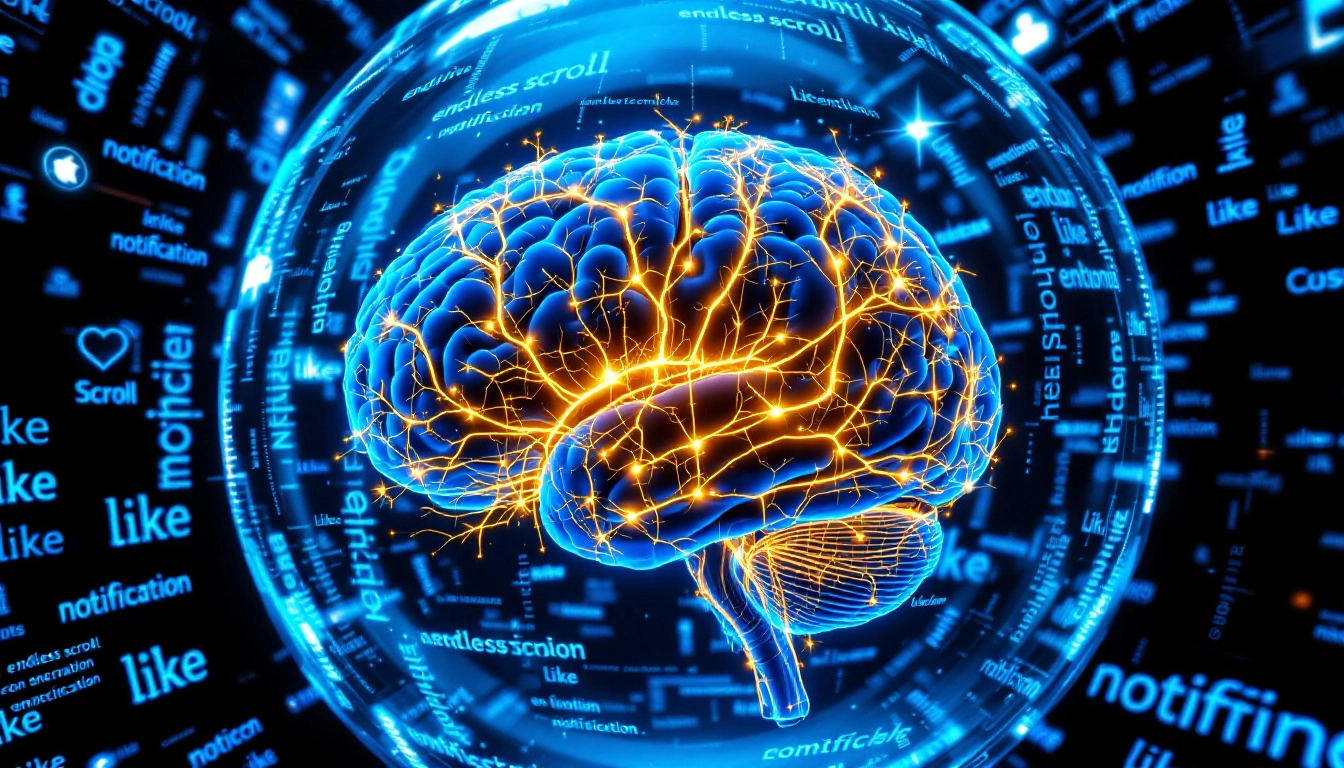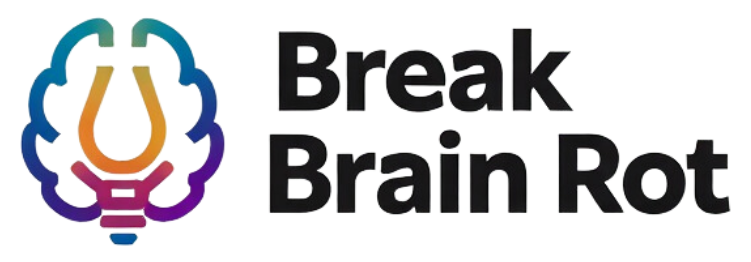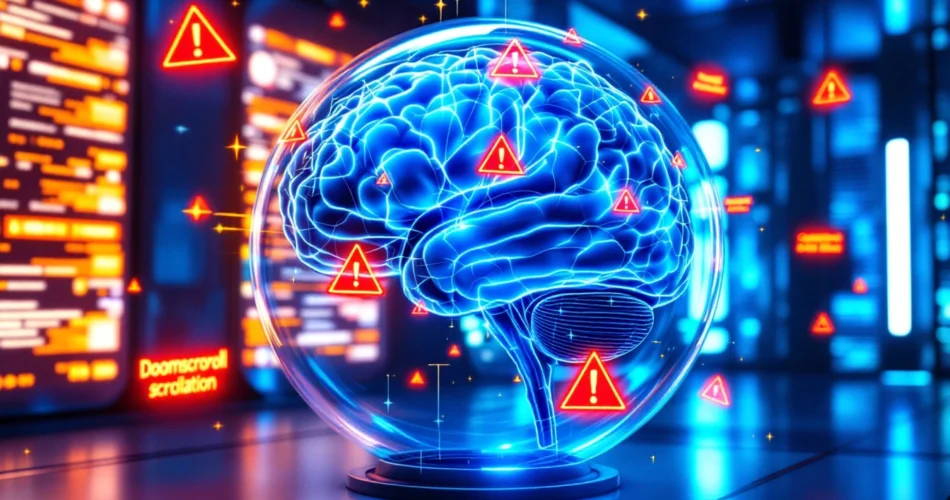Imagine reaching for your phone for “just five minutes” to check the news—and suddenly, an hour has disappeared. You’re left drained, distracted, and oddly unsatisfied. This seemingly harmless habit has a powerful neurological component: brain dopamine in doomscrolling. In this article, you’ll uncover how doomscrolling and dopamine interact to create a cycle of compulsive news consumption, why it hijacks your focus, and how you can break free from its grip for better mental clarity.
Table of Contents
- The Science Behind Brain Dopamine in Doomscrolling
- How Doomscrolling Hijacks Attention and Focus
- The Psychological Traps of Infinite Scrolling
- Rewiring Your Brain to Break the Dopamine Cycle
- Habits and Tools for Digital Well-Being
- FAQs on Doomscrolling and Dopamine
- Conclusion: Reclaiming Your Attention Span
The Science Behind Brain Dopamine in Doomscrolling
Understanding Dopamine’s Role in Reward and Motivation
Dopamine is a neurotransmitter that governs motivation, pleasure, and learning. It’s not so much about happiness as it is about anticipation. Every time you unlock your phone and scroll, your brain expects a potential reward—the next shocking headline, a new update, or a sensational video clip. According to the National Institutes of Health, dopamine is a major driver behind our seeking behavior, prompting us to keep exploring for pleasure or safety cues.
How Doomscrolling Activates Dopamine Loops
Apps and digital platforms exploit dopamine through what psychologists call “variable reinforcement.” The brain receives random hits of rewarding information—much like slot machines dispensing unpredictable payouts. The mix of negative and novel news during brain dopamine in doomscrolling creates an endless loop. Your mind believes the next scroll might reveal something critical, urging you to continue even when you feel exhausted. Learn more about neurochemical responses to screen time to understand this cycle better.
The Difference Between Healthy Engagement and Dopamine Overload
Healthy dopamine engagement occurs when stimulation is balanced—reading an article, watching a short video, or connecting with friends online. But constant exposure to intense information spikes dopamine repeatedly, flooding your reward circuit. This overstimulation contributes to desensitization, requiring even more novelty to feel engaged, much like tolerance in addictive behaviors.

How Doomscrolling Hijacks Attention and Focus
The Impact on Prefrontal Cortex and Cognitive Control
The prefrontal cortex is the area of the brain responsible for decision-making and focus. Prolonged doomscrolling can overload this region, fragmenting your attention and impairing your ability to sustain concentration. The American Psychological Association reports that information overload and constant notifications reduce working memory and inhibit critical thinking.
Short-Term Pleasure, Long-Term Focus Deficit
Each dopamine spike triggered by doomscrolling feels rewarding in the moment but diminishes your brain’s capacity for sustained engagement. Over time, the brain becomes conditioned to crave constant stimulation, making deep work or reflection increasingly difficult. You find your attention span shrinking, and your productivity waning despite spending hours “busy” online.
Signs You’re Losing Focus Due to Doomscrolling
- Difficulty recalling information after browsing news feeds
- Frequently switching between apps or tasks
- Feeling drained yet compelled to check updates again
If these symptoms sound familiar, check out our guide on mindfulness and focus training to rebuild attention control.
The Psychological Traps of Infinite Scrolling
Negative Bias and the Brain’s Threat Detection System
Humans are wired to notice threats first—it’s a survival mechanism. This innate negativity bias means the brain assigns more priority to alarming content. Doomscrolling exploits that tendency: your brain perceives constant exposure to negative news as necessary vigilance, compounding stress while releasing bursts of dopamine that reinforce the behavior.
The Social Comparison Mechanism
Dopamine is also tied to social validation. Likes, shares, and comments create instant feedback loops, triggering chemical rewards that make you seek more digital affirmation. The more you engage, the stronger your brain’s association between notifications and pleasure becomes.
Emotional Exhaustion and Digital Anxiety
Constant exposure to distressing news has measurable psychological consequences. Studies cited by Mental Health America show that excessive doomscrolling correlates with increased anxiety, helplessness, and sleep disturbances. Ironically, this emotional exhaustion drives people back to their devices for temporary relief, deepening the cycle.
Rewiring Your Brain to Break the Dopamine Cycle
The Power of Awareness and Behavioral Substitution
The first step to change is awareness. Track how many times a day you pick up your phone without conscious intent. Replace automatic scrolling with alternate micro-actions—stretching, deep breathing, or briefly stepping outside. Even small substitutions begin reprogramming dopamine pathways.
Dopamine Detox and Mindful Consumption
A “dopamine detox” doesn’t mean eliminating pleasure but recalibrating it. Schedule “offline breaks” where you abstain from social media, sensational news, and constant notifications. Reflect or engage in analog activities to reset your brain’s baseline. For a full guide, read our article on digital detox strategies.
Cognitive and Lifestyle Changes That Restore Focus
Exercise, quality sleep, and meditation are scientifically proven to stabilize dopamine regulation. Harvard Health Publishing emphasizes that consistent physical activity promotes steady dopamine production, improving focus and mood without overstimulation.
Habits and Tools for Digital Well-Being
Tracking Screen Time and Setting Limits
Use built-in phone features or apps like Freedom, StayFree, or RescueTime to track your habits. Schedule phone-free hours, create bedtime cutoffs, and silence push notifications after work hours to reduce dopamine triggers.
Positive Dopamine Sources
- Creative hobbies (painting, writing, music)
- Physical movement or mindfulness meditation
- Learning new skills or engaging in altruistic acts
These alternatives generate slower, more sustainable dopamine releases, leading to long-term satisfaction instead of constant craving.
Connecting Offline: Reclaiming Real-World Attention
While dopamine drives digital engagement, human connection thrives offline. Meet friends for a walk, join community events, or volunteer. These real-world experiences improve focus by reinforcing natural serotonin and oxytocin balances that complement dopamine activity.
Frequently Asked Questions
What is the connection between brain dopamine and doomscrolling?
Dopamine fuels the urge to keep consuming content. During doomscrolling, unpredictability makes the brain crave the next emotional “hit,” creating compulsive scrolling behavior.
Can dopamine from doomscrolling cause addiction-like symptoms?
Yes. Like any reward-seeking behavior, dopamine surges reinforce digital dependencies, leading to anxiety when deprived and difficulty disengaging from screens.
What are practical steps to stop doomscrolling without quitting social media completely?
Set screen limits, avoid checking the news before bed, curate your feeds, and introduce mindful pauses whenever you feel the urge to “just check one more post.”
How does doomscrolling affect focus and memory?
Continuous dopamine fluctuations impair working memory and cognitive flexibility, making deep concentration tasks feel mentally taxing.
What’s the best way to reset dopamine levels?
Incorporate offline hobbies, physical movement, and digital breaks. Consistency retrains your brain’s reward centers to enjoy sustained attention and calm.
Conclusion: Reclaiming Your Attention Span
Understanding the role of brain dopamine in doomscrolling is the first step to regaining control over your mindset and focus. When you learn how doomscrolling and dopamine shape your daily rhythm, you can replace impulsive behaviors with intentional ones.
Actionable Takeaways:
- Start each day with a screen-free routine.
- Identify dopamine triggers and replace them with positive habits.
- Use technology as a tool, not a trap.
Ready to reclaim control of your mind? Explore our resources on mental health in the digital era and begin rewiring your attention for clarity, balance, and purpose.


